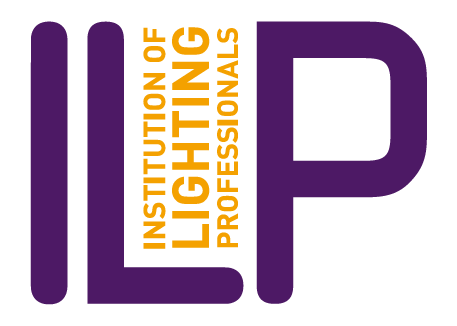For those responsible for outdoor and street lighting, it is essential they have all the relevant data they need to select the right lighting solution. And, ultimately, the only way to get reliable and accurate data about a product’s performance is through testing.
By Dyar Razaq
There are broadly two types of product testing for street and outdoor lighting – safety and performance.
All lighting manufacturers must have their products tested to ensure they are safe when in use and remain safe, even in fault conditions. These are highly prescriptive, with certain standards set out that all luminaires must meet, the foundation of which is BS EN 60598, which outlines the functional and safety requirements for luminaires.
Typical safety tests include thermal, electrical safety, electromagnetic compatibility (EMC), and fire resistance testing, as well as tests specific to luminaires such as a photobiological hazard test, which assesses the potential for eye damage. Ingress and impact testing also ensures the products can withstand the environmental conditions and a level of accidental or intentional damage.
There are also enhanced safety tests and certifications that manufacturers can achieve. For example, the European Norms Electrical Certification (ENEC). This provides greater assurance for customers as, unlike UKCA and CE Marking, which are self-declared, ENEC certification can only be granted by an approved independent third party.
PERFORMANCE TESTING
However, product safety is only half the story. A product that is certified safe may still be of a lower quality and not deliver the required performance in areas such as lifespan, energy efficiency, or lighting distribution.
That is where performance testing comes in. This helps to provide customers with the data they need to make an informed choice and select the product that is right for the application.
This type of performance testing may include a range of tests. Photometric testing ascertains the luminaire’s performance in terms of lumen output, glare, uniformity, and spacing. Measures such as accelerated lifecycle, salt spray, and temperature variation tests will help to evaluate the longevity of the product. Another important area is optical testing to confirm that the right light distribution is achieved with each luminaire configuration.
Some manufacturers will also be able to provide test data for characteristics such as colour rendering (CRI), colour consistency (SDCM) colour temperature, spectral power distribution (SPD) and efficacy.
This, of course, is how efficiently power is converted into light, expressed in lumens per watt (lm/W). We at DW Windsor have one of the largest integrating spheres in the UK, which enables us to perform in-house testing to gather this data for our luminaires.
For clients such as local authorities, for whom new street lighting represents a significant investment, having empirical data is essential.
With energy usage now an issue not only from a cost perspective but also environmentally, having accurate data on energy performance is crucial. For example, even a small difference between the as-designed and real-world efficacy can have a significant impact when multiplied across the thousands of streetlights that each local authority operates.
ESTABLISHING PRODUCT LONGEVITY
Similarly, establishing product longevity is important, as it provides some degree of assurance on long-term product performance and operation, and therefore operational cost.
It is important to remember that unlike traditional lamps that fail and go out, the light output of LEDs reduces as they age. The quality of the product determines how slowly this reduction occurs.
A good-quality LED under typical conditions may lose 10% of its light output over the course of 100,000 hours – approximately 20 years. This level of reduction may not even be noticeable.
In contrast, poor-quality LEDs under identical conditions may suffer the same degree of reduction after 20,000 hours – as little as four years – and will continue degrading. By the time it reaches 100,000 hours, it may have lost as much as 40% of its original output, which means it no longer functions as designed and may cause serious issues for end users.
LUMINAIRE WARRANTIES
Therefore, we are seeing clients increasingly looking for warranties on luminaires because of the need for long-term budgetary planning.
Luminaires that last only part of the projected lifespan and require replacement sooner than planned are a considerable issue from a cost perspective. Testing allows manufacturers to provide guarantees on product lifespans.
However, the length of the warranty is not the only consideration. Some manufacturers may offer longer warranties, but these may be limited to specific elements of the luminaire. Specifiers should always look carefully at the details and seek a product that is supplied with a broad warranty that covers all the key parts of the luminaire.
In addition, it must be understood that performance testing is less tightly regulated than safety tests, so there are often differences in the results published by different manufacturers.
Therefore, customers need to look closely at the data provided to ensure they are comparing products directly. For example, some manufacturers may take the approach to test in a worst-case scenario, while others may choose more favourable conditions.
Testing, especially performance testing, is central to allowing an informed product selection and ensuring peace of mind about the lifespan of luminaires. Specifiers should look carefully at any proposed products to ensure the right test data is available.
In particular, clients should ask to see the test data, such as the photometry files, and be wary of any stated performance that is ‘calculated’ rather than ‘tested’. A reputable manufacturer will have no problem backing up the claims they make with robust and reliable test data.
This is the only way those responsible for lighting can be assured that the products will perform as intended throughout their lifespan.
Dyar Razaq is technical manager at DW Windsor
This is an abridged version of the article that appears in the July-August edition of Lighting Journal. To read the full article, simply click on the page-turner to your right.
Image: DW Windsor



